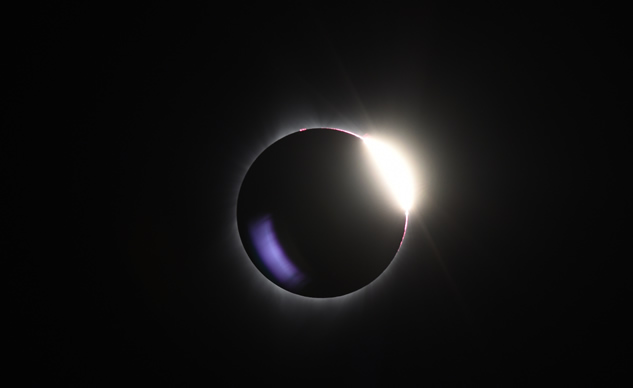
US, Mexico, others to experience total solar eclipse Monday
Gbenga Oloniniran
On Monday, April 8, 2024, a total solar eclipse will cross North America, passing over Mexico, the United States, and Canada, the National Aeronautics and Space Administration has revealed.
A total solar eclipse happens when the moon passes between the sun and earth, completely blocking the face of the sun. The sky will darken as if it were dawn or dusk.
While disclosing the information on Sunday, NASA said, “Safety is the number one priority when viewing a total solar eclipse. Be sure you’re familiar with when you need to wear specialised eye protection designed for solar viewing by reviewing these safety guidelines.”
The agency said people could watch live with them as the total solar eclipse “moves across North America on April 8, 2024, traveling through Mexico, across the United States from Texas to Maine, and out across Canada’s Atlantic coast.”
Except during the brief total phase of a total solar eclipse, when the moon completely blocks the sun’s bright face, it is not safe to look directly at the sun without specialised eye protection for solar viewing, it says on safety.
Viewing any part of the bright sun through a camera lens, binoculars, or a telescope without a special-purpose solar filter secured over the front of the optics will instantly cause severe eye injury, it further warns.
“When watching the partial phases of the solar eclipse directly with your eyes, which happens before and after totality, you must look through safe solar viewing glasses (‘eclipse glasses’) or a safe handheld solar viewer at all times. You can also use an indirect viewing method, such as a pinhole projector,” NASA added.
The agency noted that the solar eclipse would be different from the last one experienced in 2017.
In 2017, an estimated 215 million US adults (88% of US adults) viewed the solar eclipse, either directly or electronically. They experienced the moon pass in front of the Sun, blocking part or all of our closest star’s bright face. The eclipse in 2024 could be even more exciting due to differences in the path, timing, and scientific research, NASA revealed on its website.
Wider, more populated path
According to the agency, the path of totality – where viewers can see the moon totally block the sun, revealing the star’s outer atmosphere, called the corona – is much wider during the upcoming total solar eclipse than it was during the eclipse in 2017.
As the moon orbits earth, its distance from our planet varies, NASA said, noting that during the 2017 total solar eclipse, the moon was a little bit farther away from earth than it would be during the upcoming total solar eclipse, causing the path of that eclipse to be a little skinnier. In 2017, the path ranged from about 62 to 71 miles wide. During the Monday eclipse, the path over North America will range between 108 and 122 miles wide – meaning at any given moment, this eclipse covers more ground.
The 2024 eclipse path will also pass over more cities and densely populated areas than the 2017 path did. This will make it easier for more people to see totality.
“An estimated 31.6 million people live in the path of totality this year, compared to 12 million in 2017. An additional 150 million people live within 200 miles of the path of totality,” the organisation disclosed.

